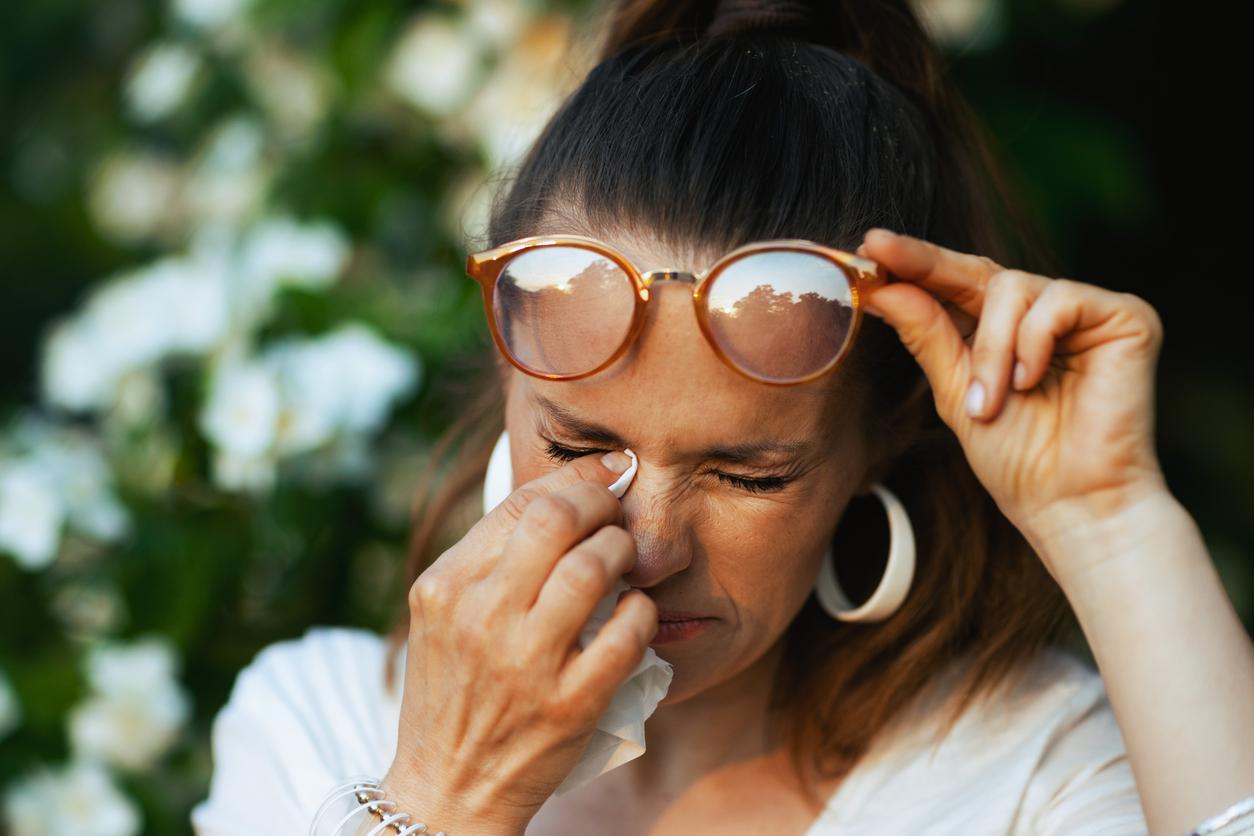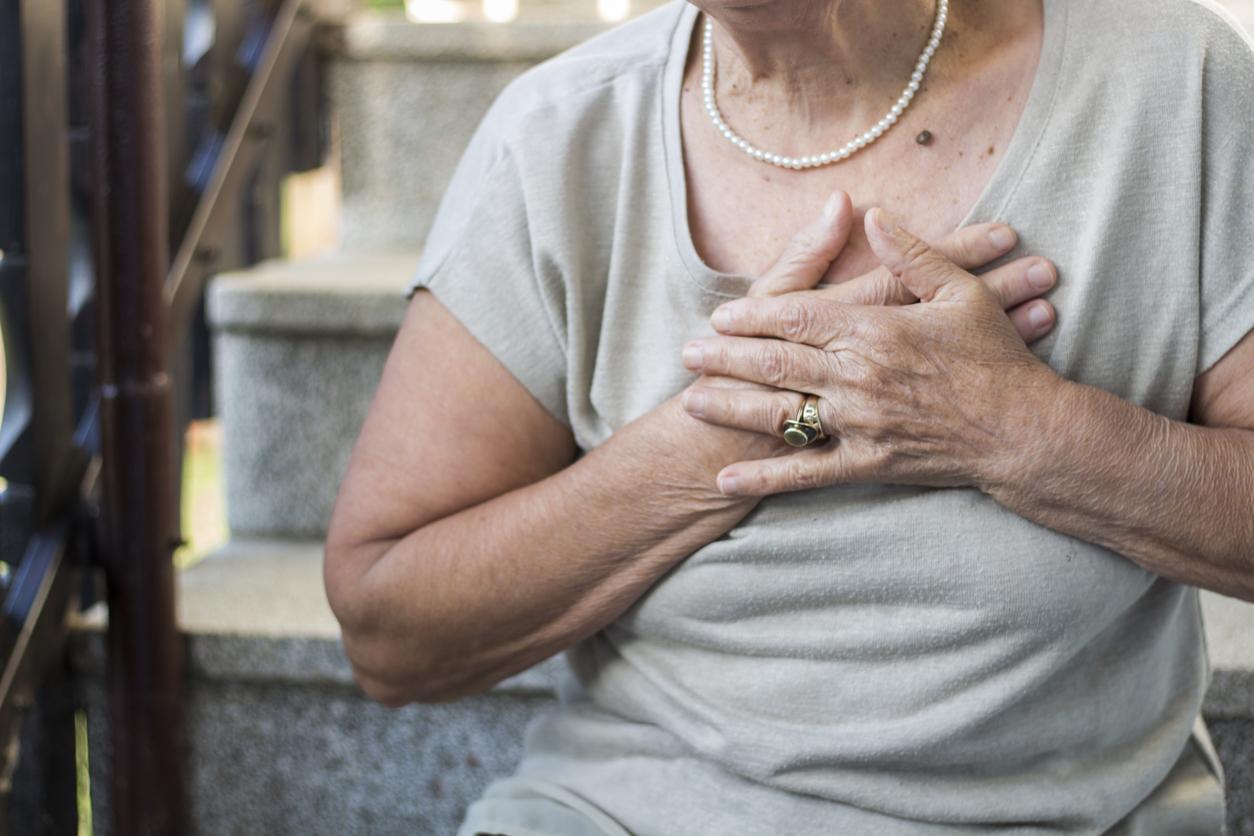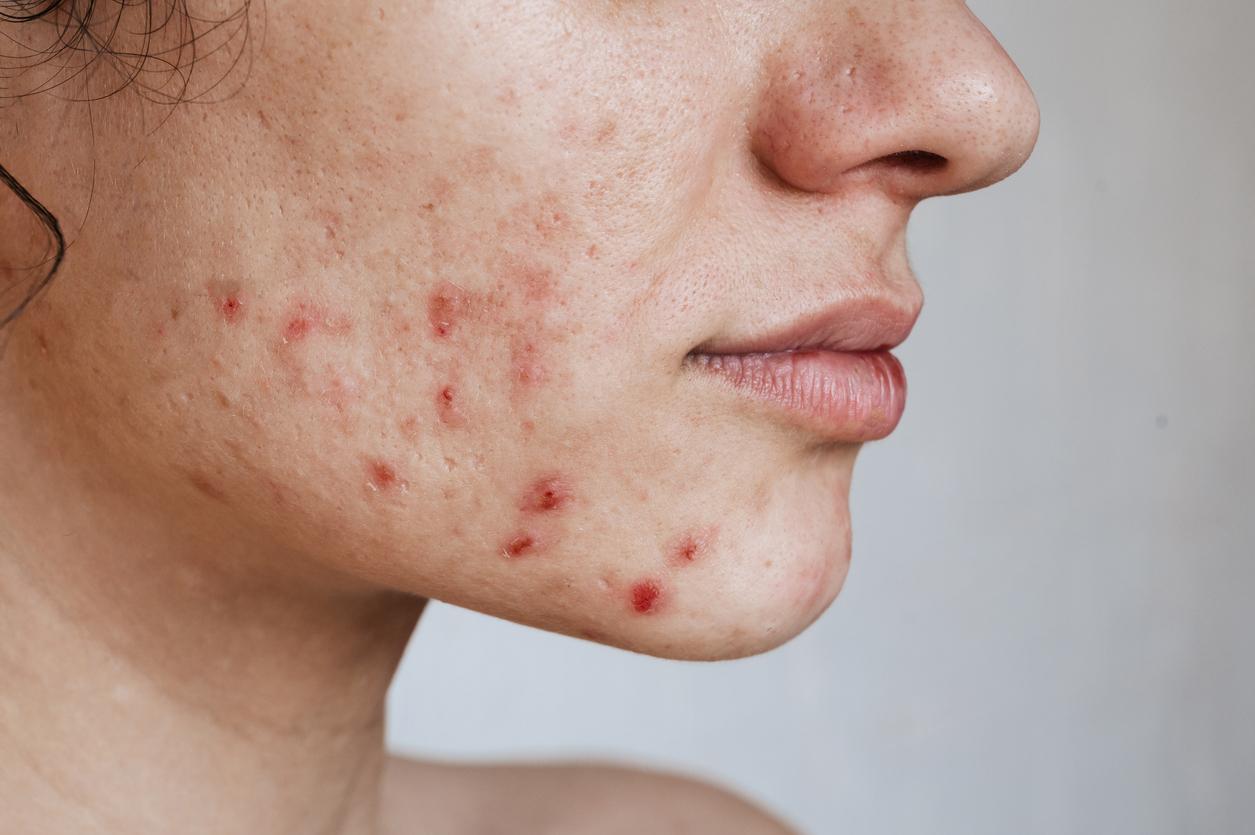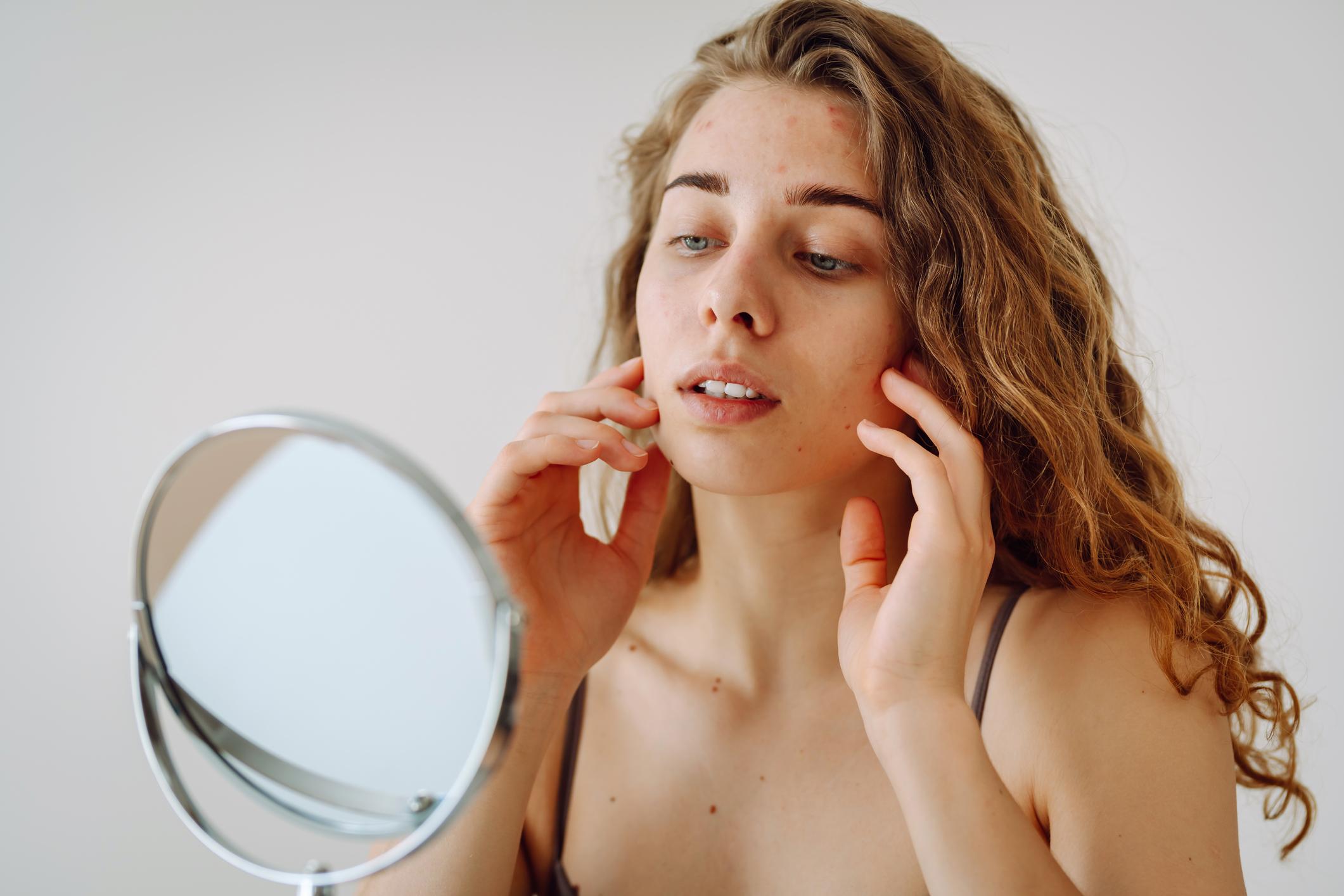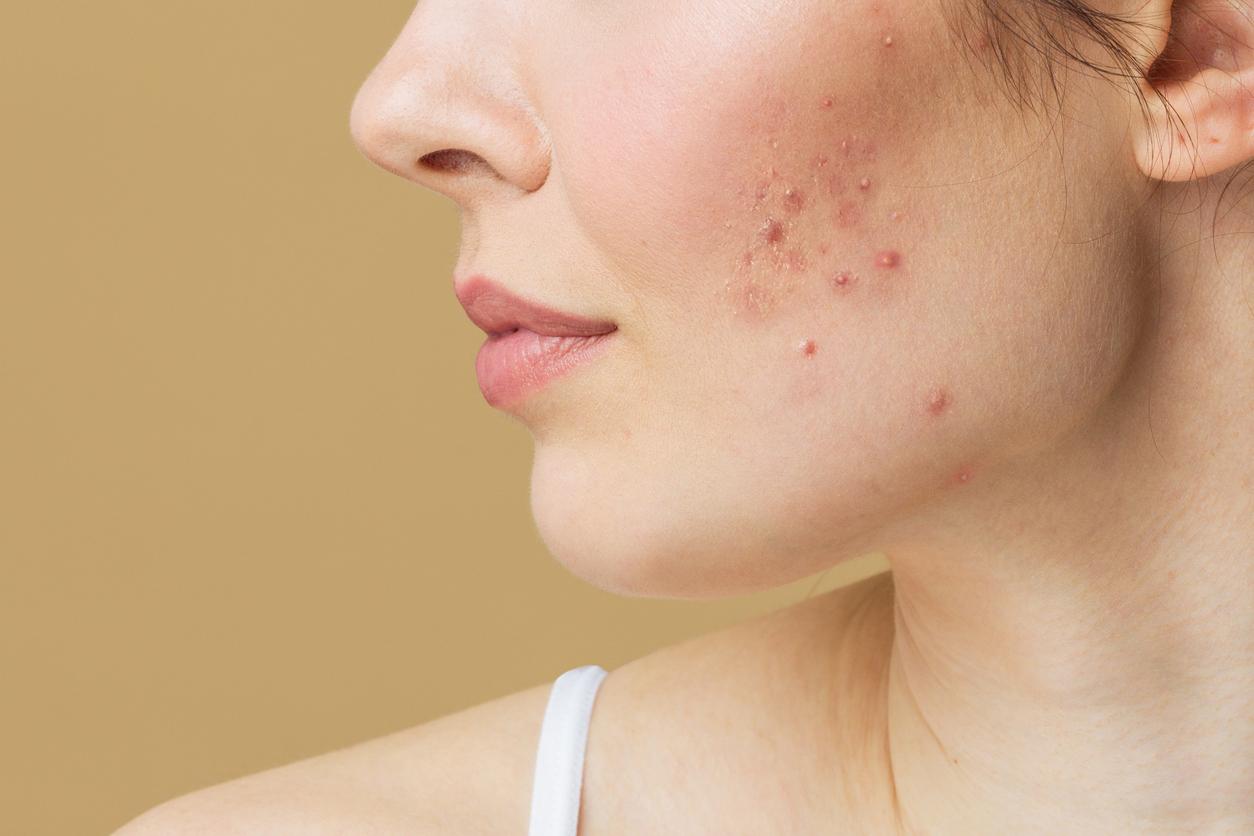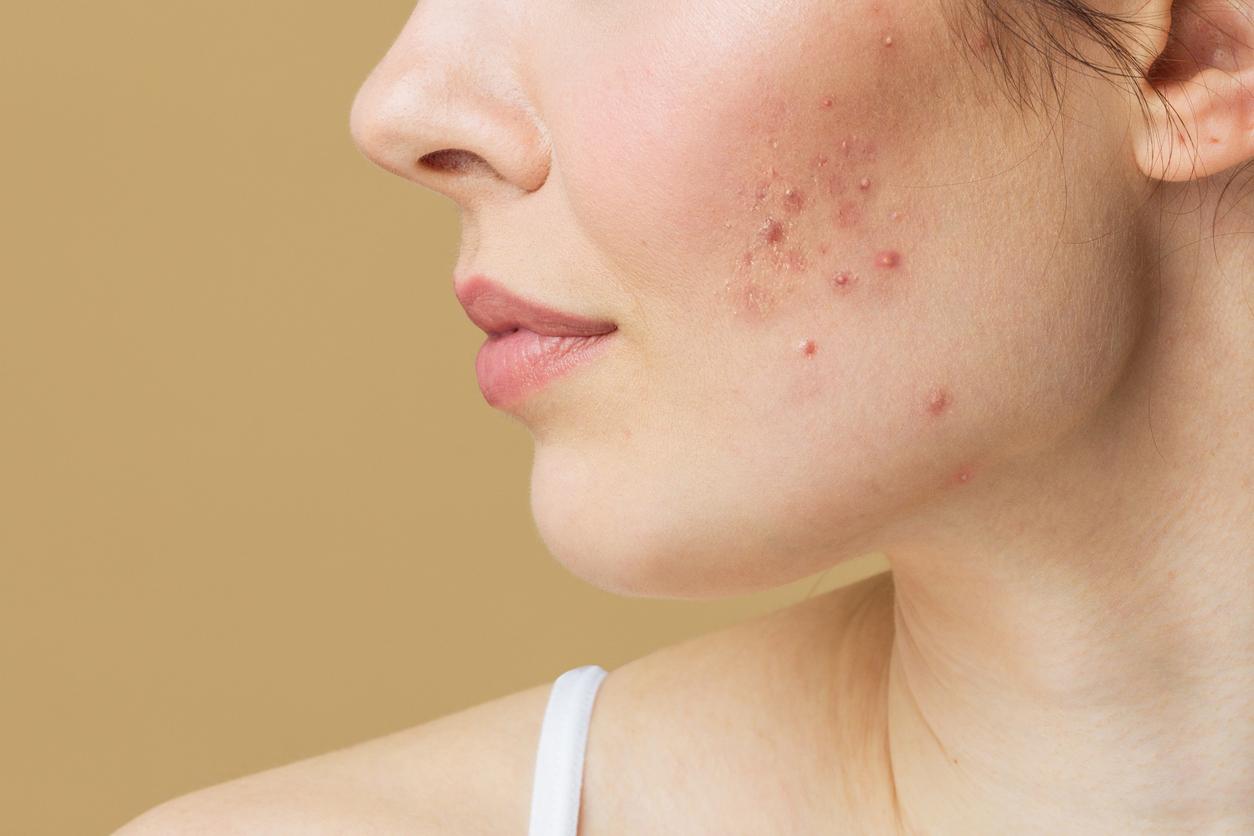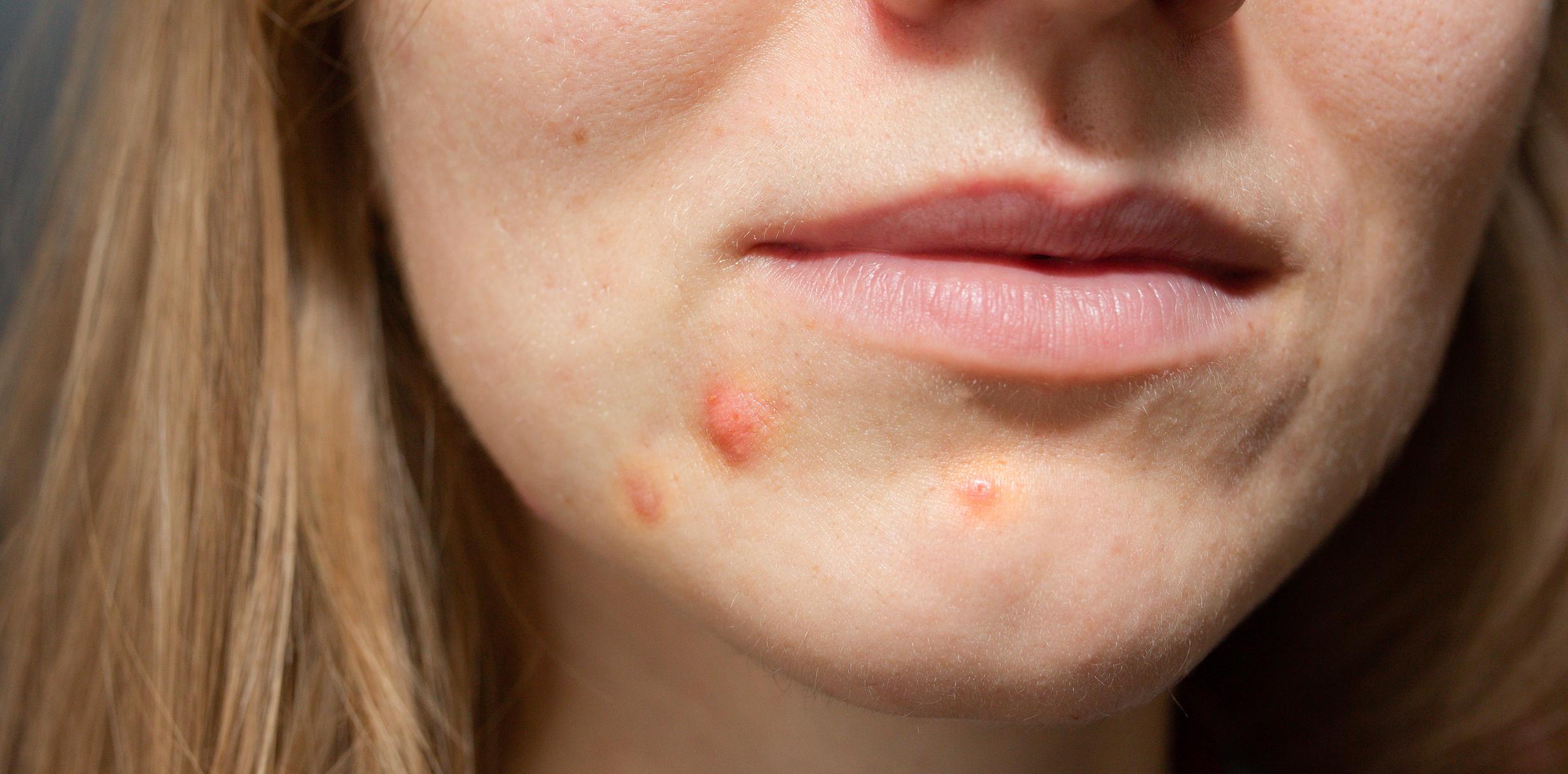Spironolactone, a treatment prescribed for people with high blood pressure, could help many women who suffer from persistent acne.
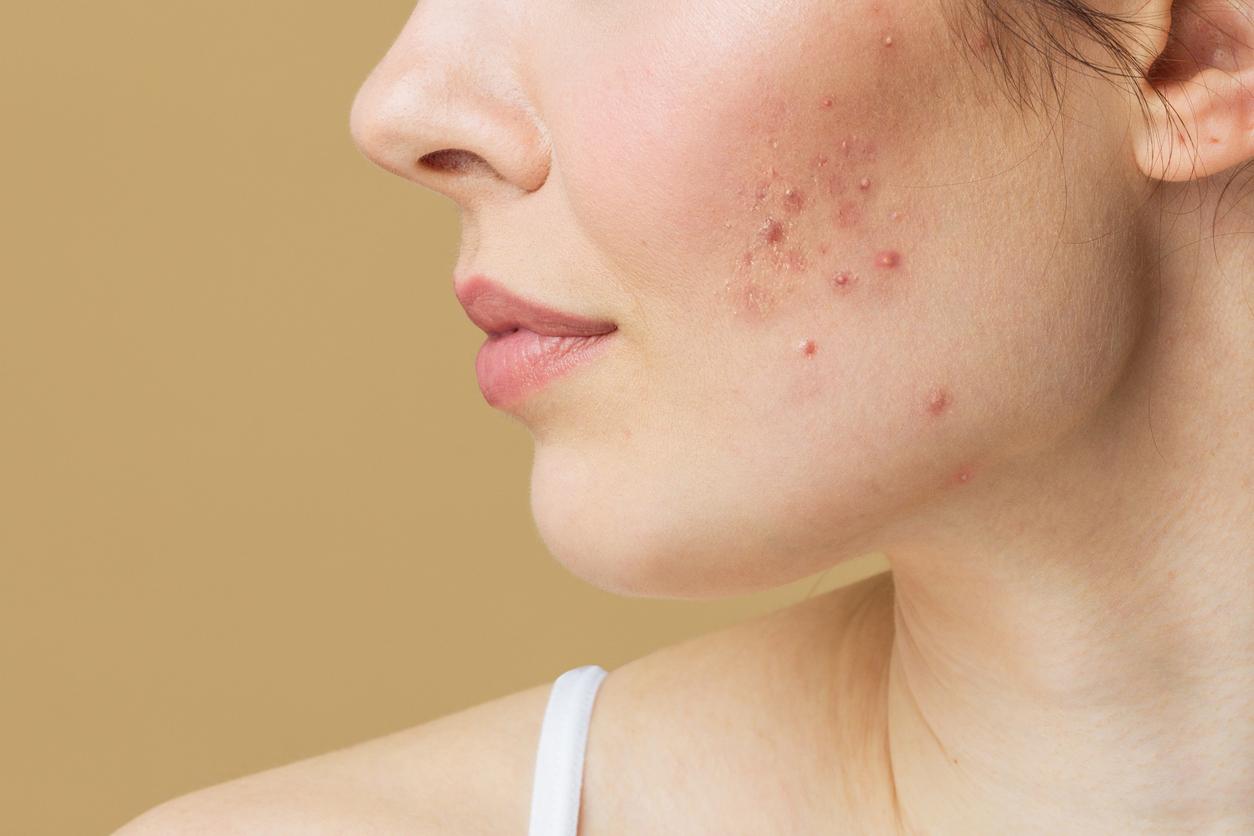
- About 25% of women suffer from acne.
- After receiving spironolactone (a high blood pressure medication) for 24 weeks, participants saw an improvement in their acne.
- Adverse effects reported in the treatment group were headache.
Acne in adults, and more particularly in women, is becoming more and more frequent. According health insurance, about 25% of women are affected. In 95% of people with acne, the face is the area most often affected by acne. This skin disease generally has an impact on quality of life and self-esteem. That is why many patients try in every way to get rid of it.
Women with acne were given a placebo or spironolactone
Recently, researchers from the University of Southampton (England) revealed that spironolactone, a drug used to treat high blood pressure, was effective against this skin condition. He “reduces the main hormone responsible for the development of acne”said Alison Layton, author of the research, in a statement.
To reach this conclusion, they carried out a study published in the journal The BMJ. As part of their work, the scientists recruited 410 women over the age of 18, suffering from facial acne for more than six months and for whom antibiotics were allegedly prescribed. Half of the participants were divided into two groups. The first group received spironolactone (50 mg/day until the sixth week then 100 mg/day until the 24th week) and the other volunteers received a placebo. All patients had to complete questionnaires about their acne and their quality of life at the start of the trial, and then 12 and 24 weeks after the start of treatment.

Acne: “an improvement after 12 and 24 weeks” thanks to spironolactone
“Research showed that women taking spironolactone saw significant improvement in their acne after 12 and 24 weeks compared to those taking the placebo,” said Miriam Santer, co-author of the study. According to the authors, adverse effects were slightly more frequent in the group that received spironolactone, with more headaches (20% versus 12% in the group that received the placebo).
“These results show that spironolactone could be an alternative to antibiotics for many women with persistent acne, in addition to topical treatments for this skin condition. (…) We hope that the publication of these results will allow a greater number of of general practitioners and dermatologists to confidently prescribe spironolactone as a treatment for acne”, concluded Miriam Santer.



